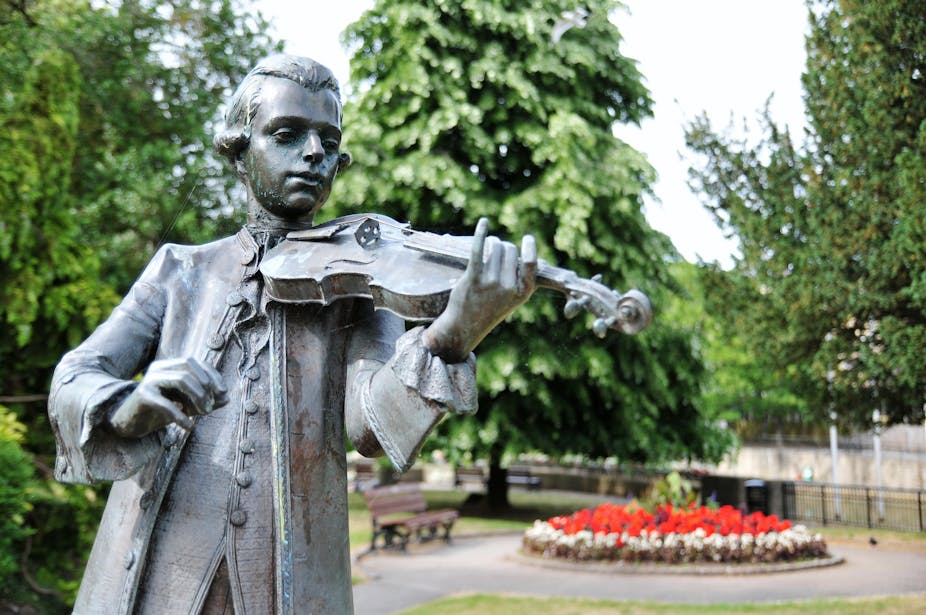MATHS AND SCIENCE EDUCATION: We’ve asked our authors about the state of maths and science education in Australia and its future direction. In this instalment, Jennifer Donovan, Carole Haeusler and Ian Stewart explain why it’s important to introduce young children to big ideas.
To make a better society and economy, Australia needs a scientifically literate populace capable of making informed decisions.
But traditionally, teaching the “big ideas” in science only appears in the later years of high school. In the new Australian Curriculum: Science, the first mention of “atoms” is in Year 9, when most students are already 14 years old.
It’s how we’ve taught science for decades and yet it coincides with a declining interest in learning science. The number of secondary students who continue with the study of science, particularly the physical sciences, into the final years of high school and university is dropping fast.

Yet research by Australian academics Russell Tytler and Jonathan Osborne shows that students are highly interested in science at ten years of age and form their career aspirations by around age 13 or 14. By the time they’re taught science in high school, it’s already too late.
Young children display uninhibited curiosity that has an affinity with the scientific method and philosophy itself. Further research suggests that ages five to ten are years of heightened brain plasticity, during which the acquisition of science’s big ideas could be perfectly timed.
Mozart was famously immersed in a musical culture and practice from early childhood – often cited as a key factor towards his genius. Language acquisition, too, seems to find success in early childhood intervention and an impressive linguistic fluency is one of its benefits. In fact, it’s hard to tell apart students who learn a foreign language early from native speakers.
Science is, in many ways, a foreign language. However, it does not remain foreign for long. Children of today are surrounded by the mass media, and encounter words and concepts about these complex ideas in science at an early age. Even in The Simpsons, the words “atoms” and “atomic” are regularly mentioned. After all, Homer works in a nuclear power plant and the local football team is called The Springfield Atoms.
Research also suggests that Year 4 children can grasp atomic theory. While other research shows that, without formal teaching, primary school children are capable of understanding more about genes and DNA than we imagined but mostly they’re picking up their ideas from TV crime shows.
It’s clear then that children are capable and already learning from the world around them. But if we do not “add the science” to these encounters, children are likely to develop misunderstandings. Research has shown that countries whose students achieve highly on international standardised science tests have spiral curricula based on fundamental concepts of science. Concepts are revisited and progressively developed each year, providing students with the best opportunity to develop conceptual understandings.
Spiral curricula are supported by a body of research that shows that cognitive development occurs in a continuous way rather than in stages. Yet our new curriculum has been shown to have gaps, sometimes of two or three years, in the treatment of some key concepts. Instead, it has a series of content-oriented topics to be covered year by year.
The way these topics connect to the key concepts is not always immediately obvious to experienced science educators, let alone to teachers new to the classroom. This system is also unable to take into consideration student readiness – some will be ready earlier and others perhaps later. Both groups are disadvantaged by a lock-step approach. Students are likely to have either forgotten prerequisite material or developed alternative nonscientific conceptions during the gaps.
It’s not that all big ideas need to be introduced early but the curriculum does need to be sufficiently flexible for teachers to address questions and ideas as they come up. When children ask about genes and DNA for example, or talk about what they have seen on crime shows, teachers should be able to take the time to establish concepts without worrying that they aren’t covering the set content.
We need to smash the ceiling that has been holding our children back and daringly focus on the big ideas of science in primary school. Only then will we build the intellectual capital needed to develop scientifically literate citizens as well as more scientists to drive Australia’s future.
Let’s nurture our future scientific Mozarts as soon as we can.
This article is co-authored by Ian Stuart, coordinator for the Atomic Theory program in primary schools and former high school teacher.
This is the third part of our series Maths and Science Education.

